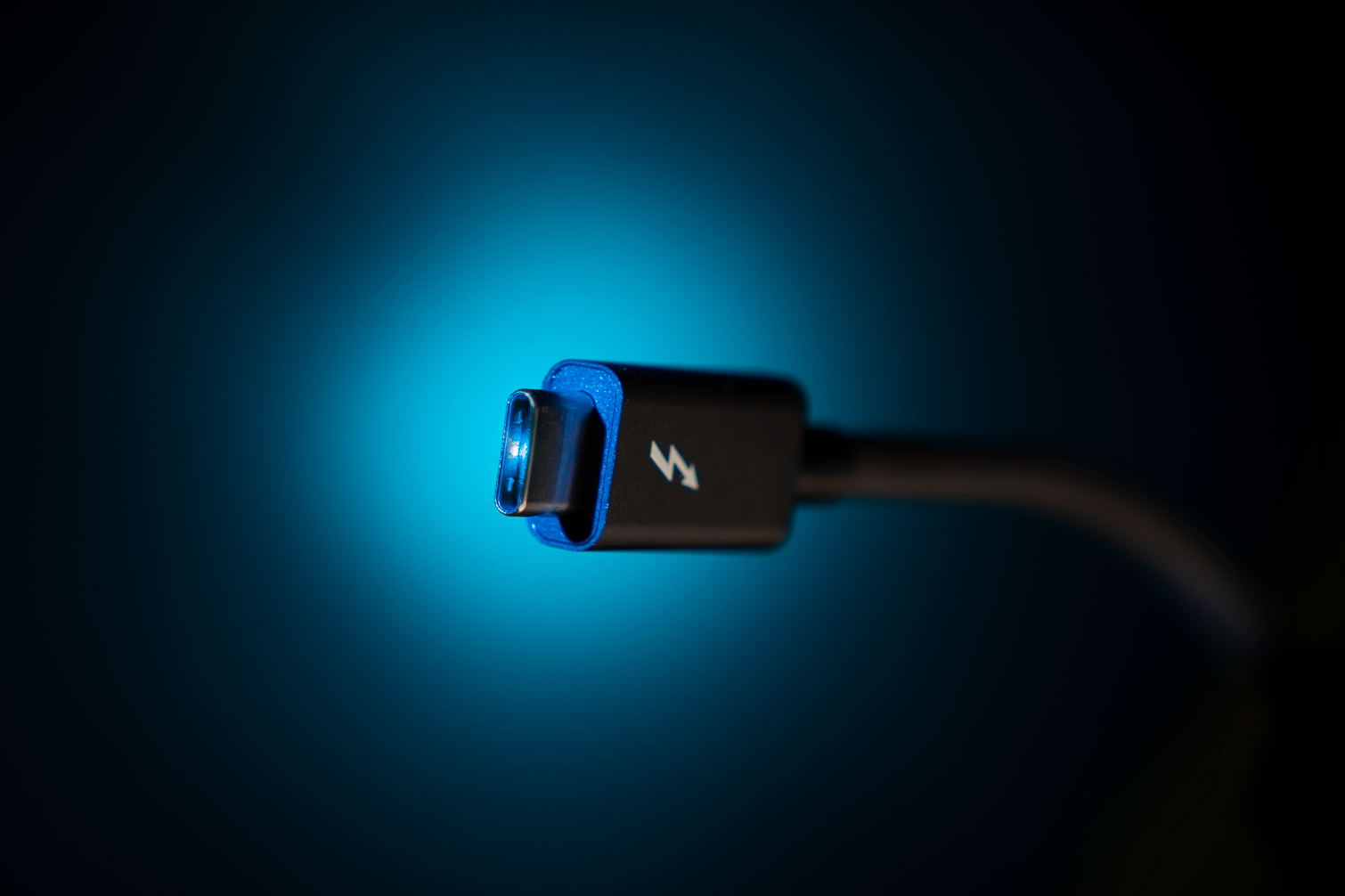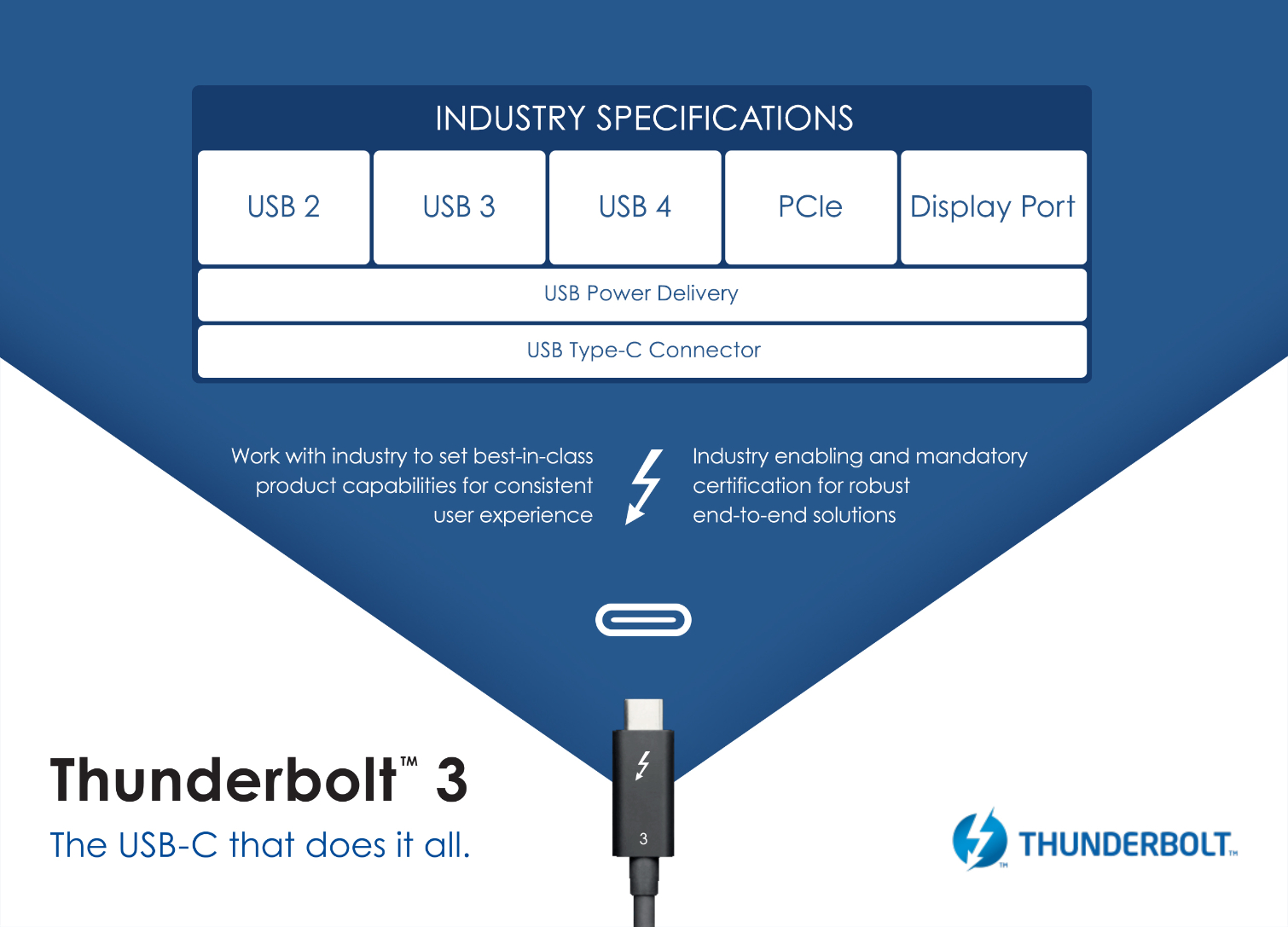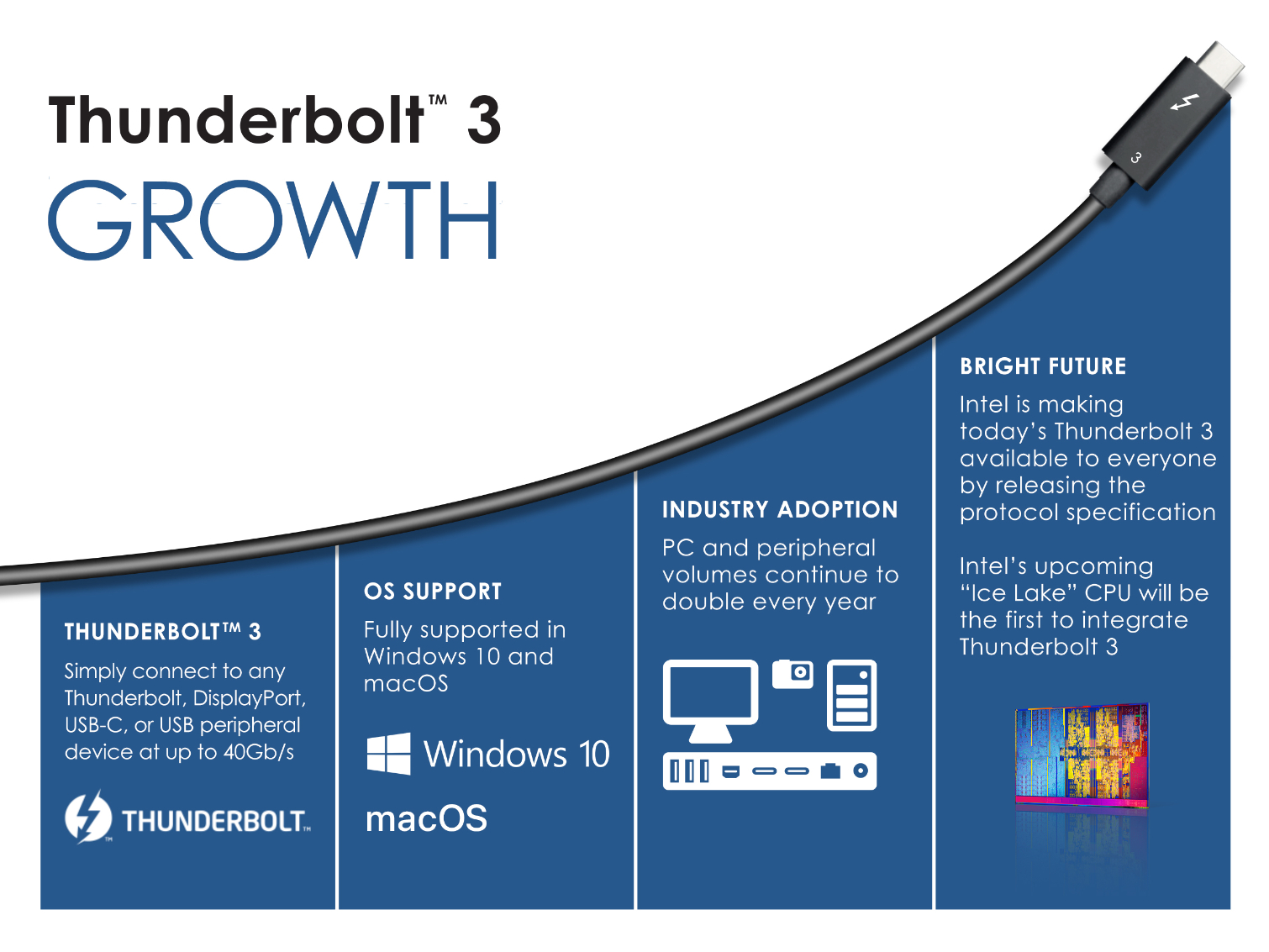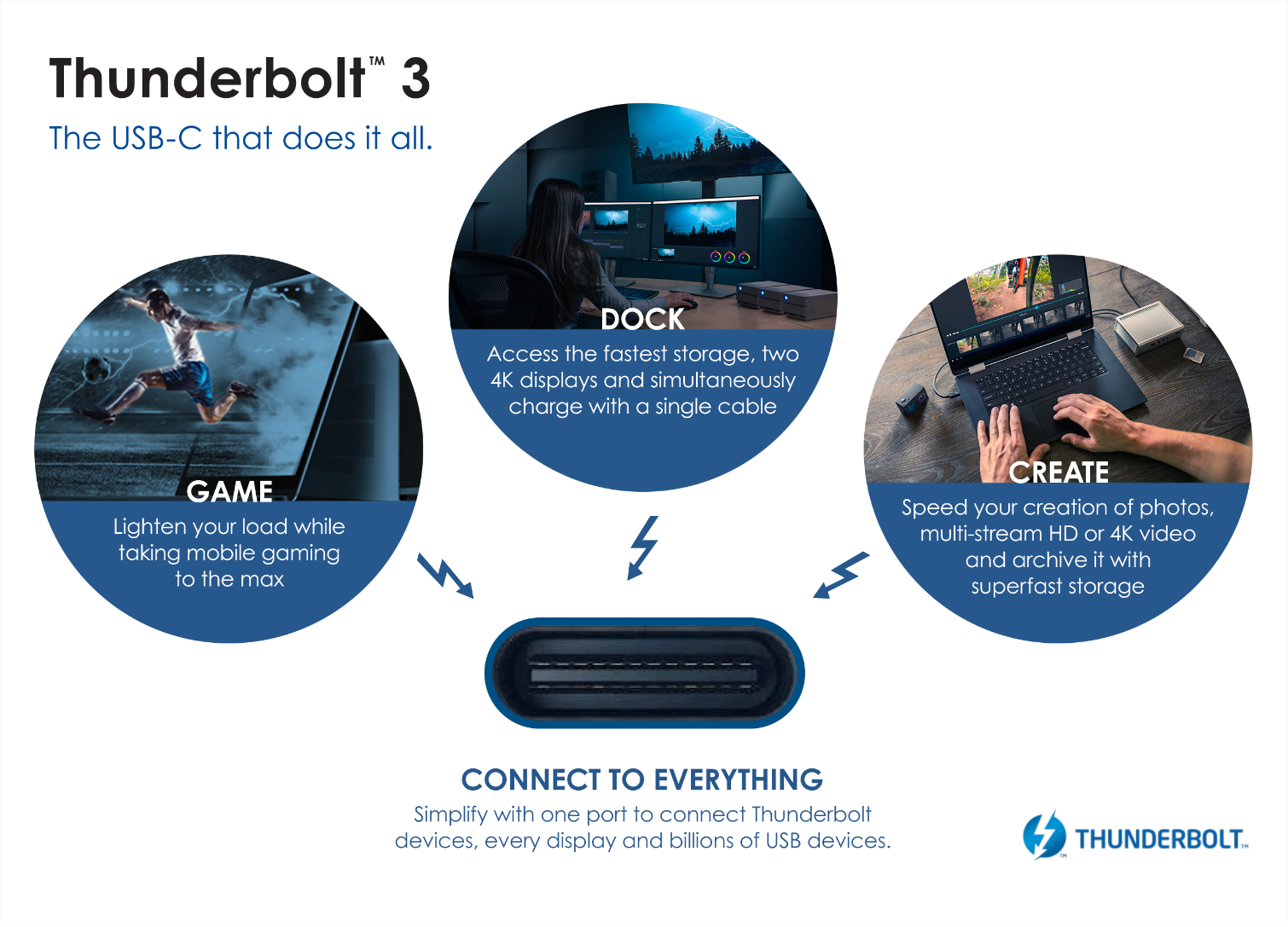USB 4 Debuts With Twice the Throughput and Thunderbolt 3 Support
The USB Promoter Group, the standards body behind the USB specification, announced it would step forward to the USB 4 architecture in the middle of 2019. The new speedy interface blends in Thunderbolt 3 support and offers twice the bandwidth of USB 3.2, meaning it supports up to 40 Gbps of throughput.
The USB specification is perhaps the most ubiquitous of interfaces in the computing industry. From mobile devices to laptops and desktop PCs, billions of devices have shipped that support the interface since its inception in 1995. Each step forward to a new specification, and the increased speed and compatibility that comes along with it, spurs a wave of new devices that range from cheap USB flash drives to new external storage enclosures. The USB interface has had its challengers over the years, but its royalty-free model and broad use, along with a steady cadence of higher speeds through improved specifications, has staved off the competition.
To further expand the range of devices using the Thunderbolt 3 specification, Intel has contributed its protocol to the USB standards committee, which integrated the protocol into USB 4. Intel's contribution comes without royalties, meaning that other chip manufacturers can build supporting silicon without paying a fee.
| Specification | Throughput | Previous Term | Technical Term | Marketing Term |
| USB 4 | 40 Gbps | N/A | USB 4.0 | Not Announced |
| USB 3.2 | 20 Gbps | N/A | USB 3.2 Gen 2x2 | SuperSpeed USB 20Gbps |
| USB 3.1 | 10 Gbps | USB 3.1 Gen 2 | USB 3.2 Gen 2 | SuperSpeed USB 10Gbps |
| USB 3.0 | 5 Gbps | USB 3.1 Gen 1 | USB 3.2 Gen 1 | SuperSpeed USB |
USB4 doubles throughput up to 40 Gbps across a two-lane interface with certified USB Type-C cables. The USB Promoter Group will also introduce a new USB Type-C Specification to handle USB 4 bus discovery.
Thunderbolt 3 integration also enables the simultaneous transfer of both data and display protocols, meaning that you can daisy-chain 4K monitors and other Thunderbolt 3 devices, like external storage or GPU enclosures, together into one cable that connects to your PC. Thunderbolt 3 passes data across four lanes of PCIe 3.0, while also supplying eight lanes of DisplayPort 1.2 that supports up to two 4K displays at 60 Hz. Thunderbolt 3 also provides up to 100W of power for system charging and 15W for bus-powered devices.
As expected, USB 4 will retain compatibility with USB 2.0 and 3.2, the latter of which was recently renamed in a bid to simplify the somewhat confusing USB naming schemes. The USB Promoter Group hasn't assigned a new marketing term for the interface (like SuperSpeed USB), though it plans to soon.
Intel has already announced that it is baking in support for the Thunderbolt 3 specification directly into its forthcoming 10nm Ice Lake processors, eliminating the need for third-party control chips. That tight level of integration builds upon the existing Thunderbolt 3 support in Windows 10 and macOS.
Get Tom's Hardware's best news and in-depth reviews, straight to your inbox.
Intel says that over 400 PC designs have come with Thunderbolt 3 support from the likes of HP, Dell, Lenovo, Apple, and Asus, with the number of units shipped doubling each year into the "tens of millions." To ensure consistent performance and quality standards, Intel manages a mandatory Thunderbolt 3 certification program that uses third-party test labs for verification. The company has certified over 450 devices, including docks, displays, storage, and external graphics enclosures.
Manufacturers of end devices pay a one-time fee for the certification, which is the only payment required to obtain the Thunderbolt 3 badge, but cable makers are subject to ongoing rigorous inspections that include spot checks and factory audits to ensure that quality remains acceptable on an ongoing basis. Intel also hosts plugfests, during which interoperability with numerous new devices is tested, and workshops.
"Releasing the Thunderbolt protocol specification is a significant milestone for making today’s simplest and most versatile port available to everyone,” said Jason Ziller, General Manager, Client Connectivity Division at Intel. “By collaborating with the USB Promoter Group, we’re opening the doors for innovation across a wide range of devices and increasing compatibility to deliver better experiences to consumers.”
For now, the USB Promoter Group, along with 50 companies, is focused on the final stages of the USB 4 draft specification. The group is also hosting the USB Developer Days 2019 event later this year. The event will provide detailed technical training on the new specification along with USB Type-C cable and USB Power Delivery training.
The USB 4 standard will be finalized in mid-2019.
Want to comment on this story? Let us know what you think in the Tom's Hardware Forums.

Paul Alcorn is the Editor-in-Chief for Tom's Hardware US. He also writes news and reviews on CPUs, storage, and enterprise hardware.



